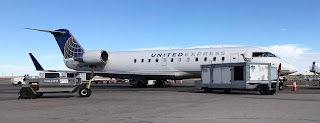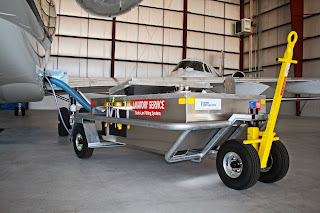The Safe Handling and Transport of Dangerous Cargo by Airside Ground Crews
Much of it seems obviously hazardous: explosives, powerful acids, extremely volatile accelerants and fuels like gasoline, and radioactive and fissile material. It can be far less cut and dry however, with some thermometers and anything else containing mercury, as well as nail polish, nail polish remover, a whole gamut of aerosol sprays, and virtually all batteries and anything with them (particularly lithium batteries) qualifying as dangerous goods.
Additionally, if anything does go wrong with dangerous goods during flight, a fire for instance, it’s not like an aircraft can just pull over to the shoulder and wait for the fire department. That dynamic is among the reasons why it’s so important for airside ground crews to be prepared for the safe handling and transportation of dangerous cargo.
Ensuring Compliance with Regulation
Freight handlers and anyone else working on a modern airside ground crew know the work involves a lot more than filling lav carts and driving aircraft tugs. An example of that increased complexity is the compliance and regulation requirements for the shipping and transport of dangerous cargo. Ground crews are subject to the requirements of one or more of the FAA-overseen hazardous material requirements (HMR), the IATA’s Dangerous Goods Regulations (IATA DGR), the ICAO’s Technical Instructions (ICAO TI), and airport, airline, and crew-specific regulations. While that may seem like a lot of rules, ensuring that a crew is thoroughly trained up on regulations and compliance is an effective way to reduce the risk of injury to crew or damage to aircraft and cargo.
Collaboration and Communication Is Important
The digitizing of information is making communication and collaboration between the entities and agencies involved in air transport far more efficient and in most cases, much easier. But, however well-established the communication and air cargo (dangerous or otherwise) supply chain communication infrastructure is, today’s aircraft pushback operator still needs to be familiar with and trained up on its details. At every link in that chain, including the shipper, airline, freight forwarders, group handlers, and any other airside ground crew, express integrators, etc., dangerous cargo should be tracked and the next link informed of its presence.
Training to Recognize Unlabeled or Mislabeled Dangerous Cargo
Finally, while it’s impossible for anyone, ground crew or otherwise, to spot every unlabeled or mislabeled piece of cargo that contains dangerous goods, there are some warning signs that can indicate an increased likelihood. Those include specific kinds of packaging, countries of origin with less robustly enforced regulations, labeling that seems suspicious, etc. For the safety of the crew member, their coworkers, and everyone on the aircraft the cargo is being shipped on, having an aware, alert, and educated ground crew on the lookout for dangerous goods just makes sense.
About AERO Specialties
AERO Specialties is well-established in the aviation industry as standard-setting innovators and thought leaders. Due to their commitment to leading-edge research and technological advancement, their ground support equipment (GSE) and associated aviation equipment is recognized throughout the industry as meeting and exceeding the highest standards of quality and reliability. That same dedication is responsible for their ensuring that the whole AERO Specialties staff—from sales and support to the mechanics—are given thorough training on all of their GSE and the roles and responsibility of airside ground crews. From their aircraft tow tractor line to GSE manuals, AERO Specialties can meet everyone of your aviation business’s needs.
Discover everything you need to help your aviation business take flight with AERO Specialties, at Aerospecialties.com




Comments
Post a Comment